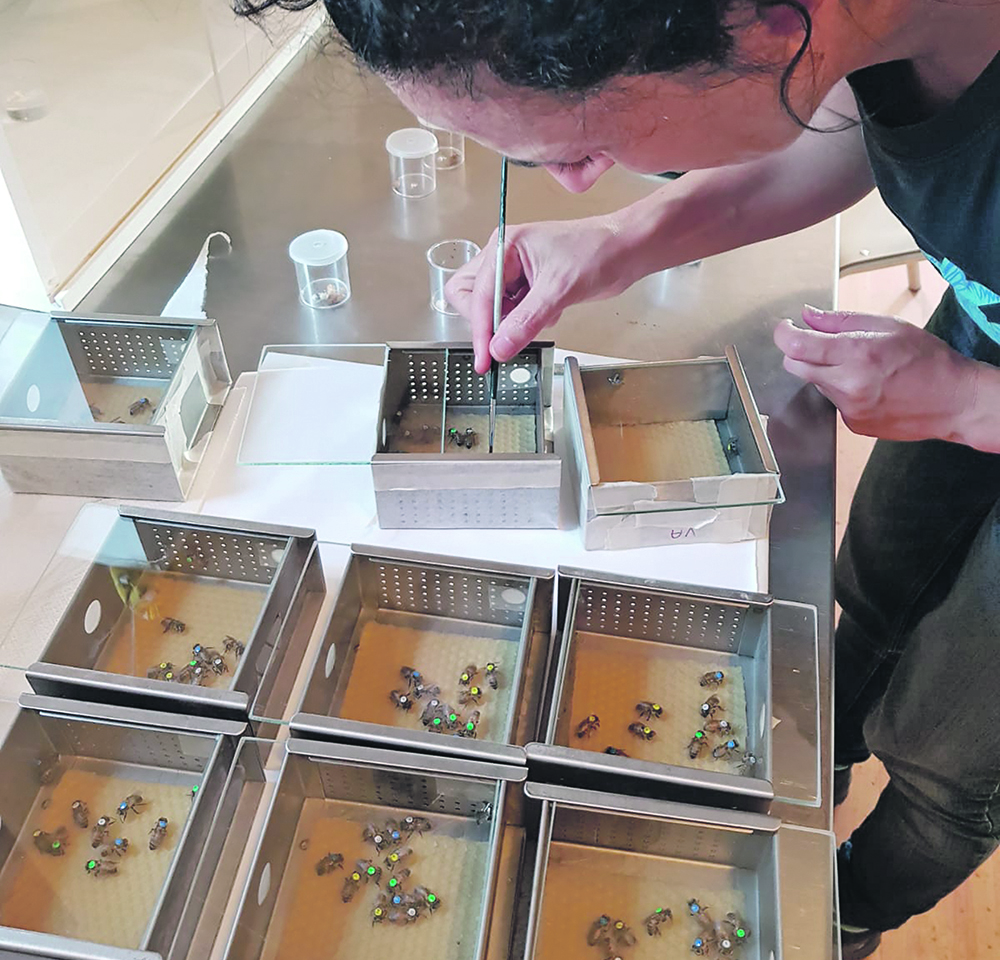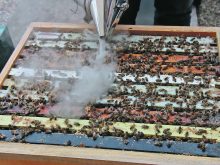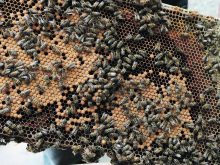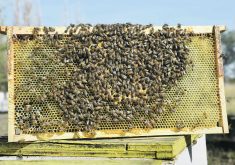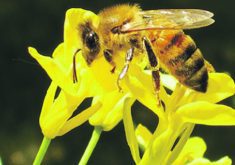One of the imperatives is to maintain a healthy environment in the core occupied by young bees, nurses and the queen
Researchers at the University College London in the United Kingdom and the University of Sassari in Italy have found that honeybees developed social distancing practices during their behavioural evolution.
It was used as a way to modify the use of space and interactions between young and old bees when the hive is threatened by harmful insects such as the varroa mite.
“For several years, we have been conducting research on the behavioural defenses used by honeybees to fight pests and pathogens,” said Alessandro Cini with the Centre for Biodiversity and Environmental Research at UCL Biosciences and co-author of the report.
“We believe that this line of research can provide useful insights to improve the health status of honeybees.”
Cini said that in an insect society, one of the imperatives is to maintain a healthy environment in the core, the critical inner part of the colony occupied by young bees, nurses, and the queen.
The outer compartment is occupied by the foraging bees. The spatial segregation between compartments allows the most valuable members — the young, the brood and the queen — to be protected from the outside environment and threats of disease.
“It is fascinating to see how quickly a colony made up of thousands of individuals can reorganize itself to keep a potential infection away, while at the same time trying to direct the grooming effort where it is most needed,” said Cini. “Bees living in a society divided in sectors was already known but observing such a quick social reorganization in the presence of a parasitic mite has been really marvelous.”
According to the report published in the journal Science Advances, the study took place in an apiary at the experimental farm run by the University of Sassari’s Department of Agricultural Sciences on the island of Sardinia from May to November 2019. The study focused on the Italian bee Apis mellifera ligustica, a subspecies of the western honeybee. The apiary consisted of 18 colonies with six colonies maintained in observation hives fitted with two glass windows, while 12 colonies were maintained in Dadant-Blatt standard hives as a source of worker bees and mites for the experiments.
The study evaluated whether the presence of the varroa mite triggered protective changes in the social organization of the bees. The varroa mite is a dangerous pest to honeybees because it feeds on the bees’ fat body, tissues that contain lipids, glycogen and proteins.
To obtain varroa-free hives, nine colonies were treated with trickled oxalic acid every week for three consecutive weeks before the start of observations.
To allow varroa infestation of the other colonies, only the first treatment with trickled oxalic acid was applied two months before the start of observations. Following that, varroa infestation grew naturally.
The researchers investigated whether the presence of the varroa mite induced changes in the bees’ social behaviour to reduce the spread of the parasite. They focused on space use and social interaction patterns.
The study was conducted on two levels. One was observation of whole colonies experiencing infestations in field settings. The other was observation of individual behaviours in small groups of caged bees experimentally infested with the mite in the laboratory to record fine-scale changes in social behaviour.
In the study, the colonies were monitored every 15 days during the experimental period.
Researchers found that, when comparing the infested and non- infested colonies, forage dances, which can increase mite transmission, occurred less frequently in the central part of an infested hive.
They also observed that grooming behaviours became more concentrated in the central compartment. They saw that foragers, or older bees, moved toward the periphery of a hive while young bees and groomer bees moved toward the centre in the face of an infestation, increasing the social distance between the groups.
Cini said that the practice of allogrooming in which bees groom each other to remove debris and parasites is a fascinating immunity-related behaviour.

“The observed increase in social distancing between the two groups of bees within the same parasite-infested colony represents a new and, in some ways, surprising aspect of how honeybees have evolved to combat pathogens and parasites,” lead author Michelina Pusceddu of the University of Sassari said in a news release. “Their ability to adapt their social structure and reduce contact between individuals in response to a disease threat allows them to maximize the benefits of social interactions where possible and to minimize the risk of infectious disease when needed.”
Cini agreed that the bees’ behaviour is an evolutionary adaptation.
“It is a response that makes absolute sense from an evolutionary point of view,” he said. “The compartmentalization and what we consider social distancing helps in terms of reducing parasite spread, which is very common and risky in the crowded conditions and confined space of the hive.”
While social distancing is heightened with the onset of a pest threat, there is a natural tendency for distancing to occur during healthy times as well, as a form of organizational immunity.
“This can be seen as a sort of prophylactic measure, to reduce the risk of pathogen spread in case they invade the colony. Our study shows that this social distancing is increased in the case of infection, and in a rather rapid way,” said Cini.

